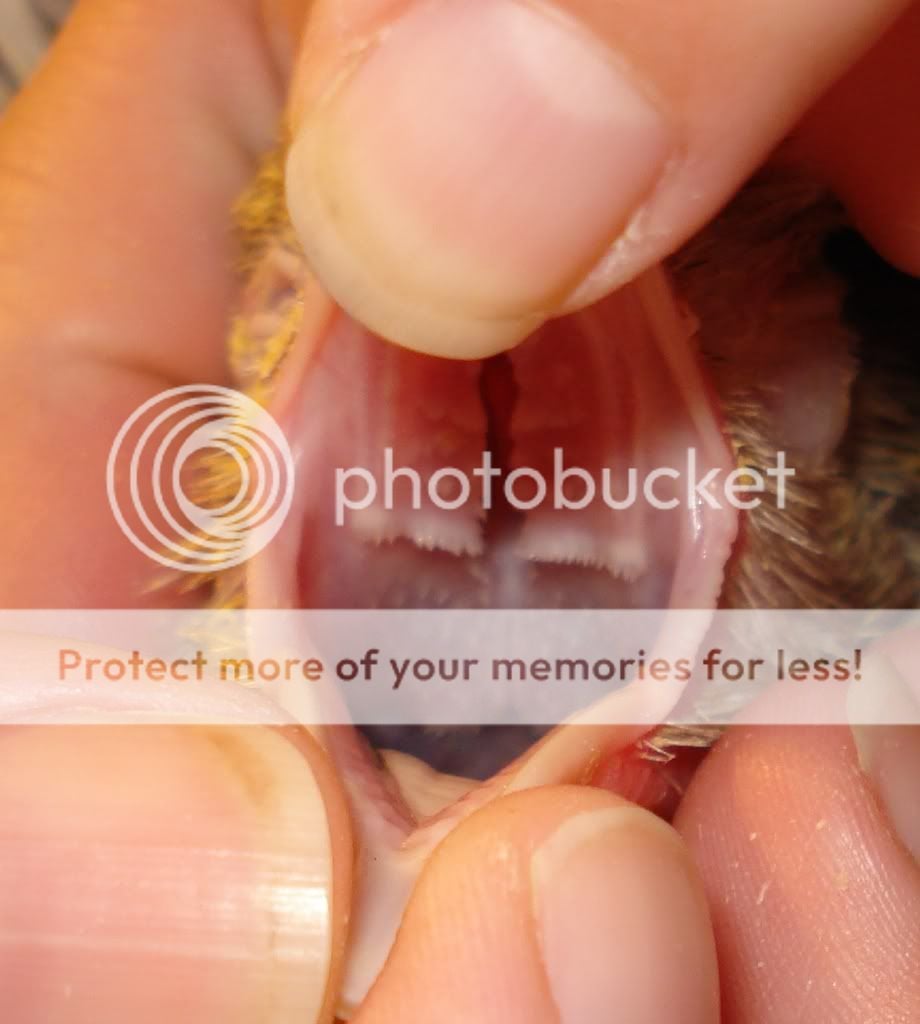Kat
how do i put these photos up here with a graphic warning? has to be easy i got head pains going on right now.
how do i put these photos up here with a graphic warning? has to be easy i got head pains going on right now.
Follow along with the video below to see how to install our site as a web app on your home screen.
Note: This feature may not be available in some browsers.
Are you referring to the cleft in their palate?Just like you have an opening between your sinuses and your primary airway (so you can breathe by mouth), peafowl also have one. I am sure you have seen pictures of an open peafowl mouth with the airway exposed? That airway, when the mouth is closed, connects to the opening behind the palate on the top of the mouth leading to the sinuses. Next time you have one with sinus issues and they are mouth breathing, open their mouth and see if you can see the plug that is keeping the airway closed. There is not much room in their sinuses as opposed to ours, so the plug is very close to that opening.

OMG! I'm so sorry for your loss, that must have been horrible for you!I had a bad experience last Thursday giving an injection. I plan to give a full account in the Respiratory Problem thread but the short of it after a long consultation with my veterinarian, was that she decided that too much stress killed the yearling hen. In our case the needle that the vets assistant had on the syringe was too large for birds so I had to go to the house for a proper sized needle while DW held the bird. We took too long to get the injection done and the release was too stressful as well, it got away before DW was ready to release it.
When giving an injection you should have everything ready and at hand. The bird should be caught quickly and carefully being held securely by one person while the second person administers the injection. The bird should be held with one arm around the body holding the wings securely to the birds body and the other arm to secure the thighs of the bird holding the legs straight to the rear of the bird. Using the advice given above by Kathy, that the needle point is in between the skin and meat of the bird. Another point to be careful of is that the needle does not pierce through both folds of the skin and out the other side. I also like to feel for wetness on the bird after the injection to assure that the medication did indeed remain inside the bird. When the bird is ready to be released lay the birds chest to the ground putting one hand on the back of the bird, then release the legs so the bird takes a few seconds to raise up without jumping or flying thus reducing sudden exertion by the bird.
I have given many, many injections but this loss was hard for me. I hope that what I have learned is of value to you.

Yep. You cannot get it all from there. But you might remove enough to allow drainage. I think I helped one but could not do anything with the other.
Quote: I did a peahen at the feedstore and it took several trips and a couple of incisions to get all of the pus out. Lots of work, but somehow I saved her. Poultry pus is tuff to get rid of, isn't it?
-Kathy
I did a peahen at the feedstore and it took several trips and a couple of incisions to get all of the pus out. Lots of work, but somehow I saved her. Poultry pus is tuff to get rid of, isn't it?
-Kathy
